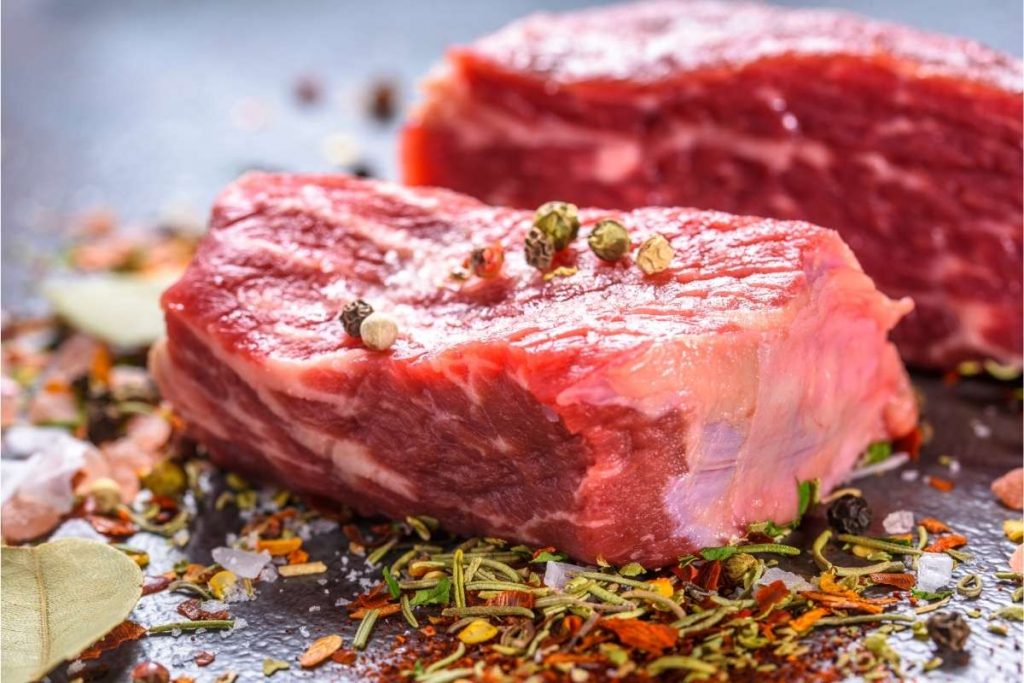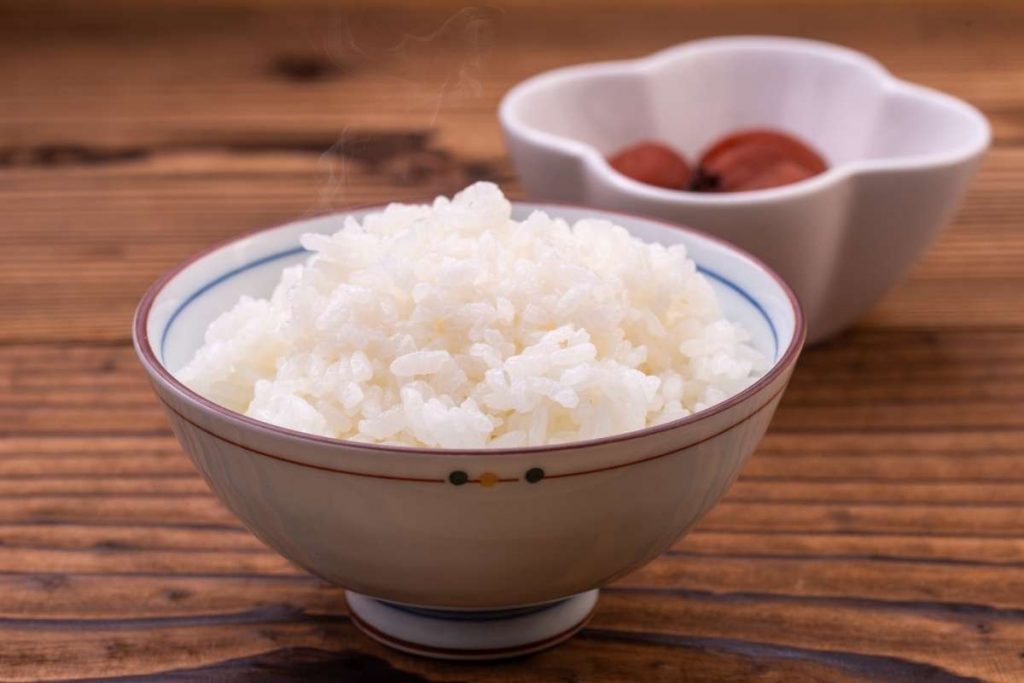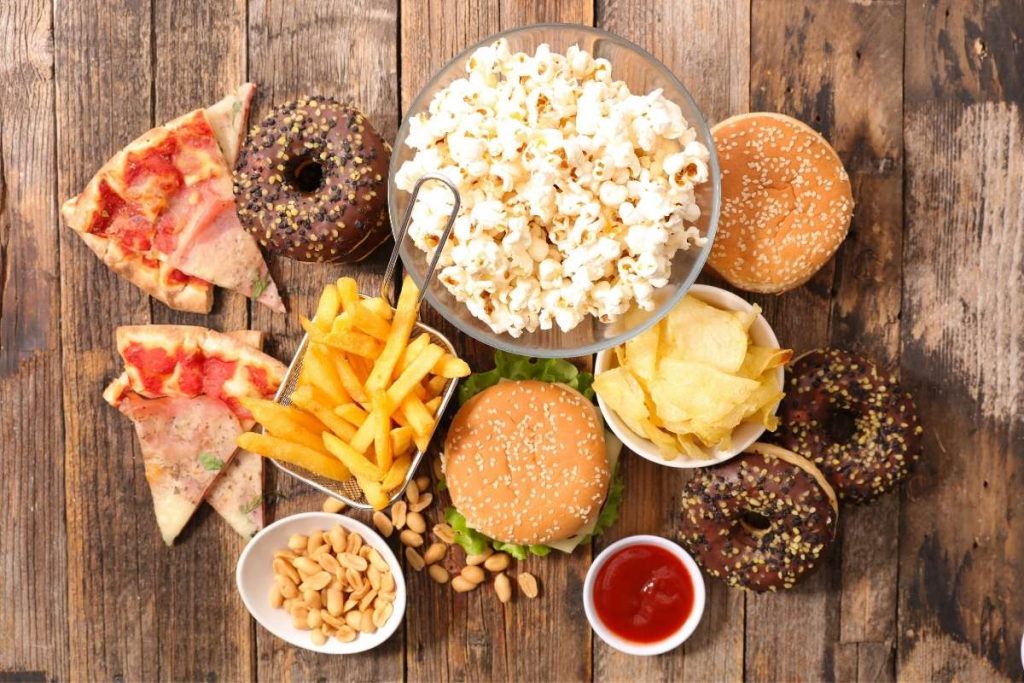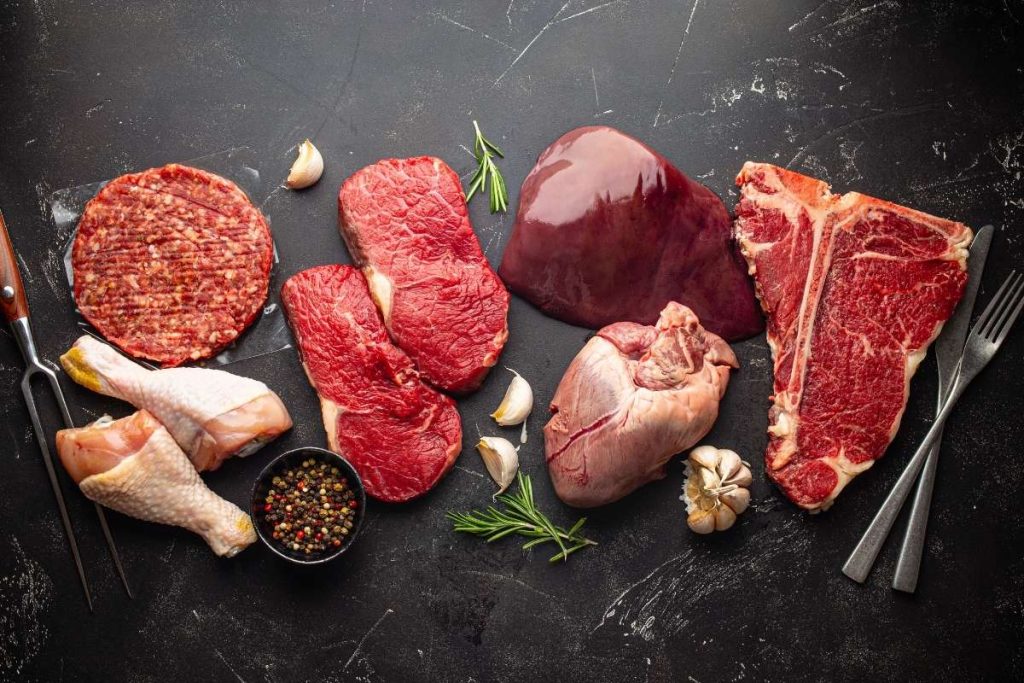What's inside
Have you had trouble with a bulking phase?
What I hear from a lot of people is how much harder their digestive systems had to work. There are a lot of other symptoms that come with it, too.
If bulking frustrates you, the vertical diet may be exactly what you’re looking for!
This diet is designed for those who want to gain muscle and weight but don’t want their body to suffer during the process.
You could also use this way of eating to ease general digestive issue symptoms, even if your goal isn’t to bulk.
I’ve been a personal trainer and nutritionist for many years. During this time, I’ve had countless clients come to me with complaints about different diets.
The vertical diet appears to be a safer way of eating compared to other diets. What matters is getting in all the nutrients you need daily.
Keep reading to learn more about the vertical diet, see a few examples of vertical diet meals, and more!
What is the vertical diet?
Related: 10 Simple Tricks To Eating Less Food

The vertical diet, also known as the Stan Efferding diet, is a diet with a caloric surplus so someone can gain muscle mass and perform better physically.
Most of the time, eating in a caloric surplus, especially an extreme one, can cause the body to work much harder than it is used to.
With the vertical diet, easily digestible foods are prioritized to make gaining weight less strenuous.
Who uses the Vertical Diet?
Related: Metabolic Confusion Diet

In general, anyone wanting to gain muscle can use the vertical diet unless their physician recommends otherwise.
Stan Efferding was the man who created this way of eating, and he says it has helped him and many others with improving their health and performance in the gym.
While primarily bodybuilders and powerlifters find the vertical diet helpful, anyone can give it a try. See if it improves how you feel, your blood test results, and more.
How does the Vertical Diet work?

Many athletes experience stomach upset when they eat in a caloric surplus because their bodies must constantly digest so much food. A lot of the time, the food chosen isn’t necessarily gut-friendly either.
Both macronutrients and micronutrients are given great attention to ensure your body functions optimally with the vertical diet.
When you have minimal internal issues, you are able to perform better during workouts and therefore maximize the growth of your experience from your caloric surplus.
What foods are on the Vertical Diet?
Related: Eating 600 Calories A Day For Fat Loss

The vertical diet keeps things quite simple by having you stick to a short list of foods. This causes minimal strain on the digestive system.
Macronutrient Sources
- Red meat
- White rice
Micronutrient Sources
- Almonds
- Bell peppers
- Butter
- Carrots
- Chicken stock
- Cranberry juice
- Oranges
- Potatoes
- Salmon
- Salt
- Spinach
- Sweet potatoes
- Whole eggs
- Yogurt
What can’t you eat on the Vertical Diet?

1. High-FODMAP food
A high-FODMAP food is a food that is difficult for someone to digest. A few examples would be apples, legumes, and asparagus.
Clearly, these foods are nutrient-dense and benefit the body in many ways. Just because a food is high-FODMAP, it doesn’t mean it’s bad for you.
However, when you’re eating in a surplus, the vertical diet suggests sticking with low-FODMAP foods to make the digestive process as seamless as possible.
2. Antinutrients
When you utilize the vertical diet method, one of the primary goals is to be able to absorb as many nutrients as possible from the foods you ingest.
Antinutrients are compounds naturally found in both animals and plants that block this absorption.
The following are a few examples of such compounds and the foods that contain them. You will notice that none of these foods are listed above.
- Glucosinolates and goitrogens – cabbage, broccoli, kale, Brussels sprouts
- Lectins – legumes and whole grains
- Oxalates – beans, beets, green leafy vegetables, nuts, tea
- Phytates – legumes, seeds, nuts, whole grains
- Saponins – legumes and whole grains
- Tannins – coffee, legumes, tea
3. Junk Food
The large category of junk food is eliminated with many diets, and the vertical diet is one of them.
Unfortunately, eating highly processed, sugary, and carb-loaded foods typically doesn’t help someone perform better in the gym.
Feeling constantly weighed down and lethargic after a sugar crash won’t get you closer to your goals. You’ll also likely gain more fat than muscle with your caloric surplus.
Additionally, many people experience stomach upset from fried and sugary foods simply because the foods are more difficult to digest and sit in the stomach longer. That leads to bloating, gas, and other symptoms.
What are the pros and cons of the Vertical Diet?
Related: Foods That Go Straight To Your Bum

Pros
- Focuses on nutrient-dense foods
- Can ease digestive issues
- Makes gaining muscle a more enjoyable process
Cons
- Restrictive with what you can eat
- Generally low in fiber
- Could get expensive due to the encouraged amount of high-quality red meats
Vertical Diet vs. Other Diet Plans

Vertical Diet vs. Carnivore Diet
Few people are able to actually sustain a carnivore diet long-term due to its restrictions.
If you’re unfamiliar with the carnivore diet, it’s exactly how it sounds. This way of eating involves consuming solely animal products. Essentially, it’s the opposite of the vegan diet.
The vertical diet and carnivore diet are similar because the primary goal of each is to help someone gain weight, and, more specifically, muscle.
The vertical diet specializes in helping someone go through a bulk without digestive issues. Meanwhile, the carnivore diet focuses on consuming nearly zero grams of carbohydrates on a daily basis. Animal products are composed of proteins and fats.
The following foods are most commonly consumed on the carnivore diet:
- Beef
- Chicken
- Lamb
- Pork
- Bison
- Venison
- Turkey
- Duck
- Organ meats
- Shrimp
- Crab
- Salmon
- Tuna
- Lobster
- Scallops
- Yogurt
- Milk
- Cheese
- Eggs
- Butter
- Pork rinds
- Bone broth
As one can imagine, a diet focused on animal products may be missing some essentials. This includes vitamin C and dietary fiber, both of which aren’t really present in meat.
However, devotees of the diet find it easy to supplement these.
There are also concerns that a meat-heavy diet can elevate bad cholesterol levels. However, carnivores claim that the diet counters this by reducing inflammation and glucose spikes.
Ultimately, the lack of long-term research means you should check in with a doctor before attempting or sustaining the carnivore diet.
Vertical Diet vs. Keto Diet
If someone was wanting to lose weight, then the keto diet could be an effective tool – as long as you’re very careful.
Like the carnivore diet, the keto diet is essentially another low-carb diet. The vertical diet differs since it is a low-FODMAP diet that does encourage certain carb sources. Specific fruits, rice, and sweet potatoes are often recommended, for example.
Keto, meanwhile, limits a person to an average of 50 grams of carbohydrates per day, which is 200 calories.
When your body lacks carbohydrates for energy, it is put in a state of ketosis. In this state, the body burns stored fat instead of glucose.
The ketogenic diet is considered a fad diet to some and a lifestyle to others. Many people who follow the keto diet drop 20 pounds right off the bat, but then they slowly gain it back.
They do this since they are unable to keep up with the restrictions and their body is no longer in a state of ketosis.
While the keto diet can certainly help someone lose weight, it is important to recognize that there are some side effects. These can range from flu-like symptoms to organ damage.
Plus, there have been no long-term studies performed on the way of eating. In fact, it was formulated for children with epilepsy and should be followed under a doctor’s supervision.
Either way, if you are considering trying the vertical diet, the keto diet shouldn’t be on your radar because its purpose isn’t to gain muscle.
The Best Vertical Diet Meal Plan

Neither protein, carbohydrates, nor fats are ignored when it comes to the Stan Efferding vertical diet.
However, protein should be prioritized to help contribute to desired muscle gains.
Aim to consume one gram of protein per pound you weigh. Since this is likely to be more protein than you’re used to eating, try dividing it up fairly evenly throughout your meals to make it more manageable.
Refer to the vertical diet sample meal plan below to get some ideas for meals you can enjoy with the vertical diet foods we mentioned earlier!
7 Day Sample Meal Plan
Breakfast Options
Meal 1:
Make a vertical diet breakfast omelet with whole eggs, spinach, and bell peppers. Cook a side of potatoes with butter and salt.
Meal 2:
Get your omega-3s in the morning with a salmon omelet! Combine whole eggs, salmon cooked in butter, and bell pepper. Sprinkle salt on top.
Lunch Options
Meal 1:
Make a salad with spinach, carrots, bell pepper, chopped almonds, and salmon.
Meal 2:
Have lamb with chopped carrots on a bed of white rice cooked in chicken stock.
Dinner Options
Meal 1:
Cook some white rice in chicken stock and serve as a base with salmon and sweet potatoes cooked in butter and salt.
Meal 2:
Combine white rice cooked in chicken stock with lean ground beef. Enjoy with an orange.
Snack Options
Meal 1:
Make a smoothie with yogurt, cranberry juice, and spinach.
Meal 2:
Dip almonds, carrots, and sliced bell peppers into yogurt for a filling and healthy snack.
Supplements
Related: Pride Pre Workout Review
Stan Efferding speaks about how the vertical diet should cover all your nutritional bases and be easy on the digestive system.
This means that no supplements are required on the vertical diet plan.
Many supplements are known to cause stomach upset. Whey protein powder is an excellent example because even if someone doesn’t have any intolerances to dairy, there’s still a good chance that they could experience pain and discomfort following ingestion.
Beyond that reason, Stan Efferding has discussed that he has found he doesn’t need even a multivitamin when he is purposeful with his eating.
Having intention with your meals by making sure you’re consuming a wide variety of nutrient-dense foods can mean you no longer need supplements like multivitamins and green powders.
Many people have difficulty getting to this point. Frequent blood tests can shed some light on what your body has been deficient in and what you are already doing right.
Calories Recommendations
Because weight gain is one of the ideal vertical diet results, it’s recommended that you eat in a caloric surplus.
The exact calorie number is different for everyone and dependent on factors such as the following:
- Age
- Weight
- Height
- Gender
- Genetics
- General daily movement
- Type and number of workouts per week
A good place to start is to find out what your maintenance calories are. This number is how many calories you need to eat on a daily basis to maintain your current weight.
There are 3,500 calories in a pound, so go ahead and add 500 to your daily maintenance calories. This should allow you to gain a pound per week.
Be aware that this additional pound will never be entirely muscle. Some fat gain is inevitable, but if you eat enough protein, you can keep that aspect to a minimum.
Stick with the 500-calorie surplus for a while. Then, slowly work your way up as it makes sense for your individual goals.
Frequently asked questions

Is the Vertical Diet good for weight loss?
While the vertical diet plan is designed for those wanting to be in a caloric surplus, it could also be utilized to lose weight.
If you have digestive issues in general, the vertical diet food list can give you some insight on what to eat to minimize the amount of work your body has to do to process any number of calories.
Just be sure to be eating in a caloric deficit in addition to following vertical diet recipes. This ensures your body is burning stored fat for some of its energy rather than solely food.
Why is it called the Vertical Diet?
The vertical diet has its name simply because of how the vertical diet food is pictured.
The image shows an upside-down T with red meat on the left, white rice on the right, and all the other micronutrient-rich foods below the horizontal line.
How long should you be on the Vertical Diet for?
If you’re feeling energized and healthy with no issues, it’s generally safe to only eat vertical diet foods until you reach your fitness goal.
Because the diet does omit many nutrient-dense foods, get frequent blood tests. This way, you can make sure you’re not severely lacking any nutrients that could lead to health problems.
Conclusion
We hope that you enjoyed our guide to the vertical diet!
Every eating method has its pros and cons; it really depends on your lifestyle, current health status, and goals as to whether or not the vertical diet would benefit you.
Many people have loved gaining weight without feeling gassy and bloated. However, others claim this diet is too restrictive and foods like apples should never be omitted.
Comment below whether or not you think the vertical diet is worth a try, and don’t forget to share this article with anyone you know who may benefit from learning more about it!

